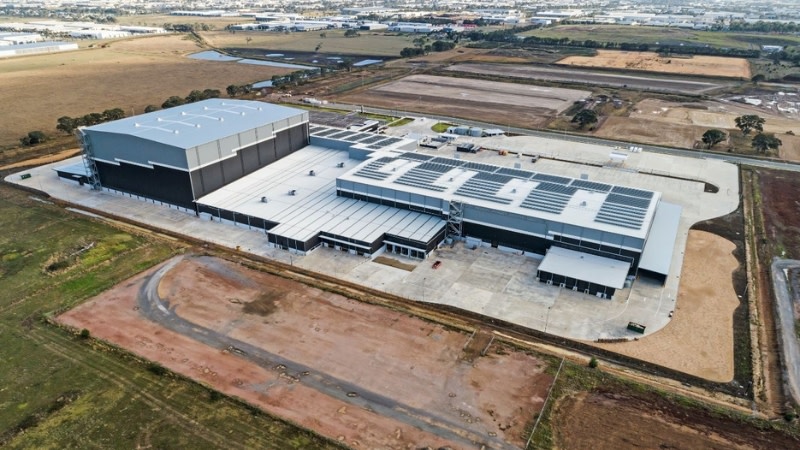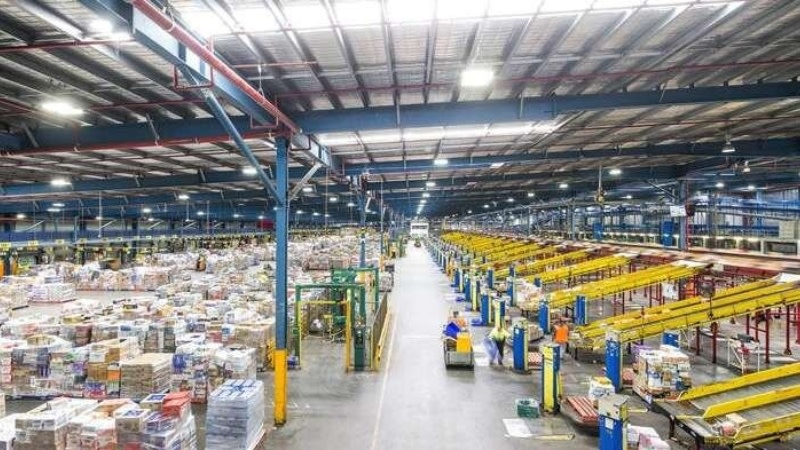Resources
Newsletter
Stay up to date and with the latest news, projects, deals and features.
Subscribe
Uncertainty surrounds the supermarket warehousing and logistics sector, as the pandemic-fuelled boom in home-delivered groceries cools and landlords weigh the risks of committing to ‘cold chain’ conversions.
While the manic fads for toilet roll, rapid antigen tests, and at-home delivery may have faded, the industry is yet to normalise into post-pandemic operating models.
Chris Coldrick, partner at Deloitte’s supply chain and procurement practice, says supermarkets are under more scrutiny than ever.
“For the first time in my career, supply chain is considered newsworthy,” Coldrick tells The Urban Developer.
Experts agree that cold chain logistics—the transporting and storing of temperature-sensitive goods in a controlled environment—will become a hot topic for property owners in the year ahead.
“Delivery services, particularly online retailers, will typically outsource to cold chain warehousing operators,” IBISWorld industry team leader Darcy Gannon says.
“Cold chain warehousing obviously comes with a lot of technical difficulties. The only way you’re going to make more money is if you benefit from economies of scale, or if you just provide more storage.”
The big two supermarket chains, Coles and Woolworths, are largely buyers, but others are more likely to consider renting property, or outsourcing services.
“Coles and Woolies benefit from being established and they benefit from their big store networks. So they’re not in the same market for commercial property, because they simply have such pools of capital that they just own their own locations,” Gannon says.
“But at the moment, a lot of people have supply chain disruptions on their mind. And so demand for warehousing is relatively strong, especially considering the current macroeconomic factors.”

“However, there are certain parameters that prevent demand for properties suitable for fast-moving consumer goods from being as high. You have to take into account cold chain storage, you have to take into account shelf life, non-perishables and perishables,” Gannon says.
Converting a warehouse to a cold chain asset is an expensive proposition for owners, who’ll need to be convinced of forward demand to stump up.
“The fact that grocery delivery is projected to grow over the next five years is good for operators, and good for property owners. Because if you own a commercial site that’s really viable for a cold chain warehouse, then the more online grocery sales there are, the higher demand will be for your location,” Gannon says.
Key operating metrics, however, continue to bounce about unpredictably, making it difficult for analysts to read the tea leaves. While growth is almost certain, its shape is yet to reveal itself.
Coles’ latest results, from the July 2022 quarter, show revenue up 13.7 per cent over a three-year period, while Metcash (owner of IGA and Foodland, as well as liquor retailing brands) was up 31.7 per cent for the half, compared to three years ago.
Woolworths quarterly results show that e-commerce was down 14.5 per cent year-on-year, reflecting a drop from the year of lockdowns.
However, on a three-year compound annual growth rate, it’s still elevated by more than 43 per cent. And Woolworths B2B food segment is up a staggering 36.1 per cent.
IBISWorld’s latest supermarket and grocery store research estimates the sector turns over $124.9 billion in revenue annually. According to Gannon, that volume of spending means even the smaller players have massive heft.
“The supermarket grocery industry is huge,” Gannon says.
“While it’s traditionally been viewed as a duopoly, based on the size of the industry, Aldi, Costco, IGA, they’re huge because there’s so much money flowing through them.”

Gannon says that the era of price-based groceries competition is coming to an end. Instead of $1 milk, supermarkets are putting more weight on factors such as customer experience. Location of stores (accessibility and convenience) and warehouses (logistics) are another part of the strategy.
Kate Strickland, head of JLL’s NSW retail property and assets management team, says that “supermarket players are quite competitive”, and that their precinct strategy is responsive to local demographic changes and consumer demands.
“The influences of Aldi, Harris Farm, IGA and polished grocers has only enhanced the quality or style of what consumers are expecting from those very individual players in this market.
“That is to say there are very differing styles of quality, price, value propositions and varieties,” Strickland says.
Consumers may have come to expect delivery services, but the nature and scale of final demand is still in the discovery phase, experts say. In the meantime, distribution companies with skinny margins and fat rental bills are running out of time to make it work.
Much ado was made in early 2022 about a pandemic-induced growth spurt of near-instant grocery delivery services. App-based Voly and Send promised 10-minute delivery, but rose and fell in almost the same timeframe. Competitor Milkrun is still solvent at time of writing.
Ride-sharing platforms such as Uber and restaurant delivery services such as Menulog are also branching out into groceries, although Deliveroo’s Australian arm went into administration in November.
While these companies were quick to bid up inner-city sites for distribution hubs, falling demand for delivery means some of those sites will be coming back on to the market.
Experts also predict that supermarkets will continue to place their on-demand liquor deliveries with services such as Jimmy Brings, who’ll hold the thin margins and legal liabilities, and likely won’t need to adapt their bottleshop property strategies.
“I think what we’re seeing is a retreat from the pandemic peak for 10-minute delivery,” Gannon says.

“That pandemic bubble, I wouldn’t say it’s burst but it’s subsiding.”
“The operating model that they use needs a very specific set of circumstances, and a certain amount of distribution hubs, for it to be commercially viable.”
“I think we’re seeing the real-time effects of not enough demand to sustain those kinds of operations.”
On the supermarket side, demand for delivery is also subdued compared to recent years, but it’s not going to disappear, according to Coldrick.
“I’m not surprised by the way e-commerce has fallen but I think we can expect it to come back.
“The quality of experience is currently not where supermarkets would want it to be. They’re struggling with the completeness and timeliness of the basket.”
According to IBISWorld research, the big two are in an arms race with different distribution strategies. Coles has bet on centralised, automated distribution centres, while Woolworths is pushing last-mile optimisation using micro-fulfilment centres in existing locations inside the inner ring.
The Coles strategy of automated packing centres will require significant investment in assets before it’s up to par, and even then will only be suitable for certain products.
“Automated real estate, per square metre, is very, very expensive. So you want stuff to be flying through it,” Coldrick says.
“You want products that are lovely and regular in shape, something that can afford to get a bit dented. Something that sells really fast but isn’t too bulky.”
“There are some products with terrible sets of characteristics for automated facilities. Tim-Tams are OK, but they’re a bit damage-y.
“Watermelon would have to be right up there. Watermelon’s an absolute menace.”
You are currently experiencing The Urban Developer Plus (TUD+), our premium membership for property professionals. Click here to learn more.
